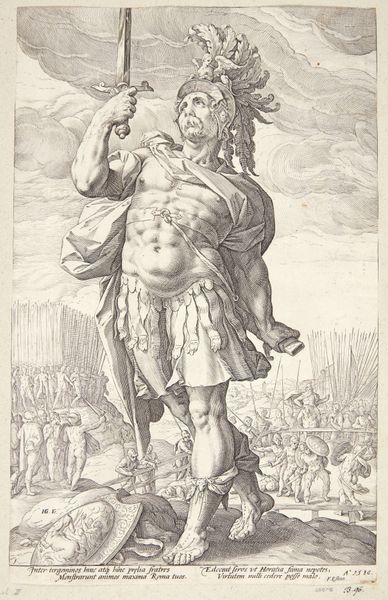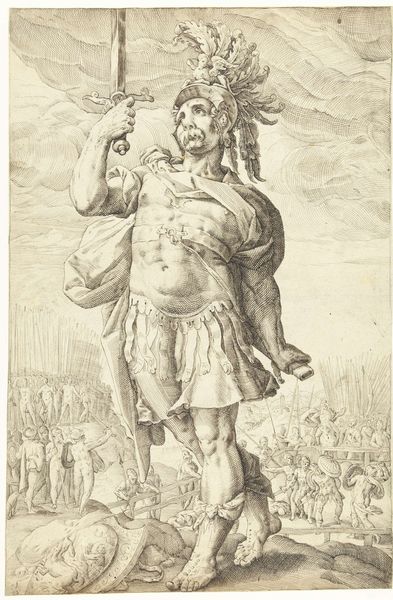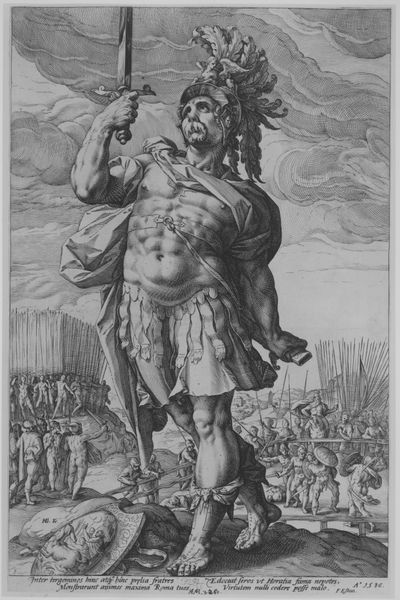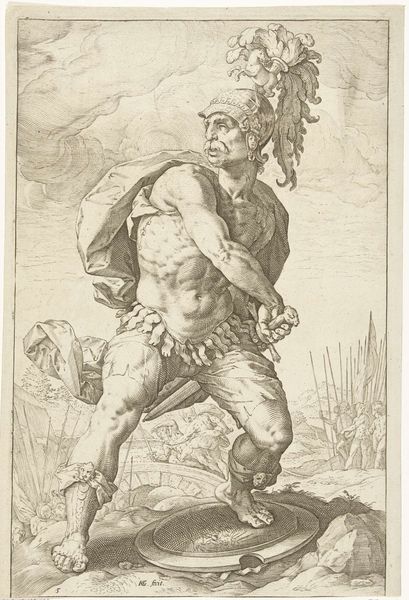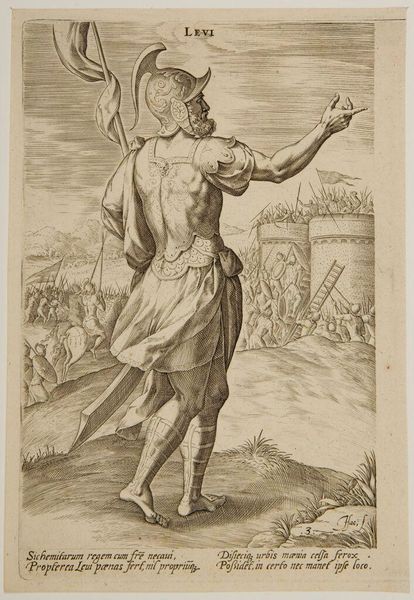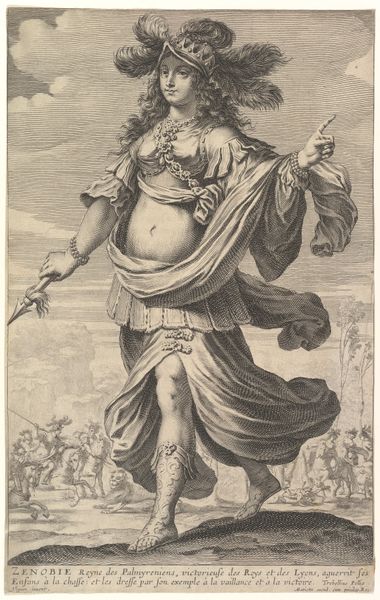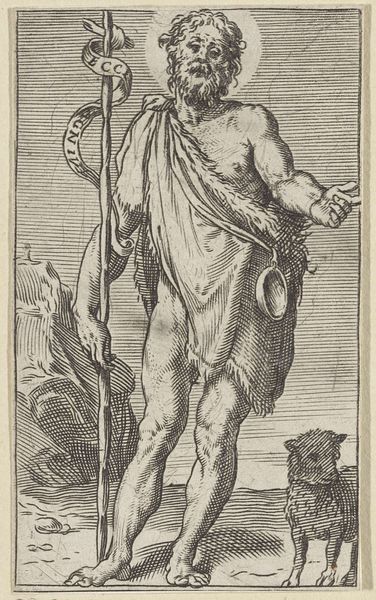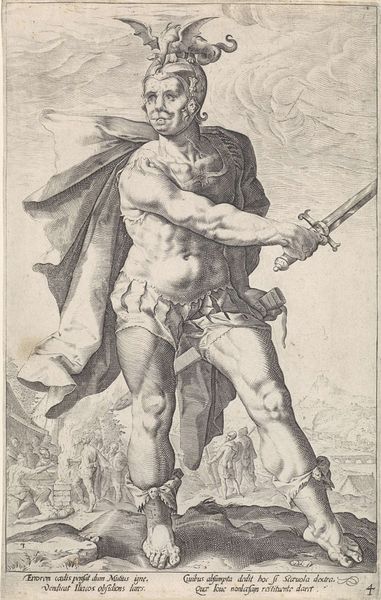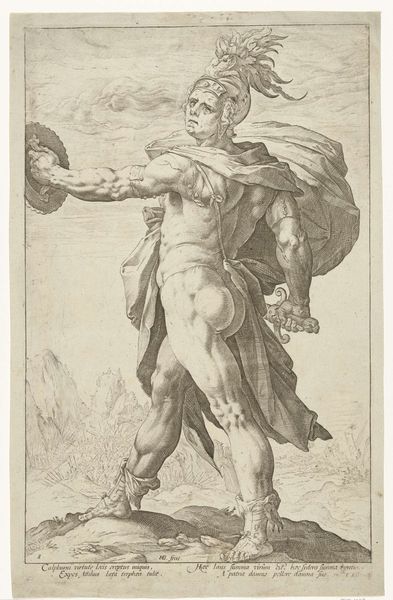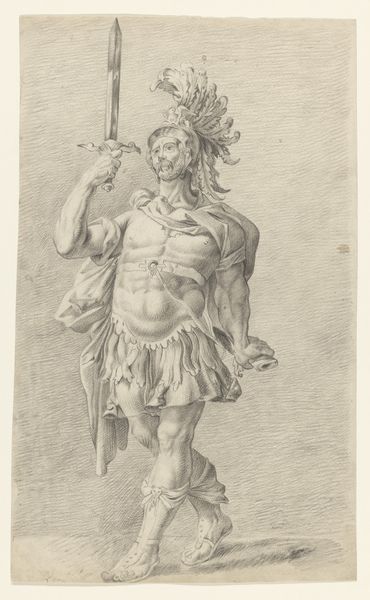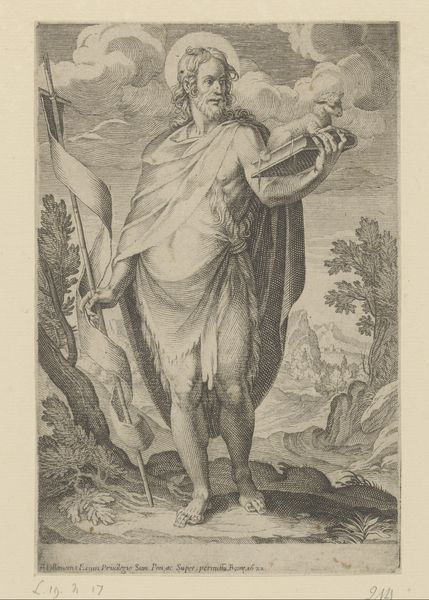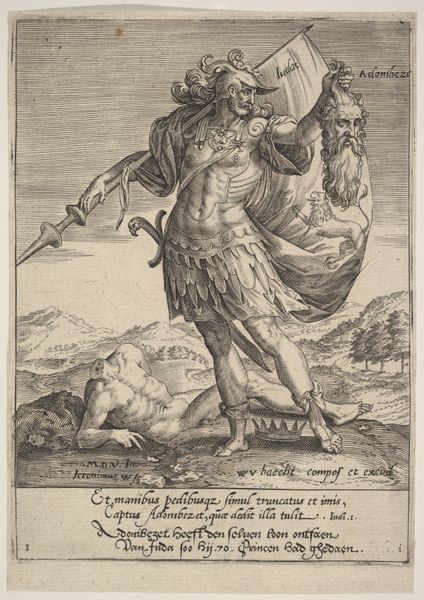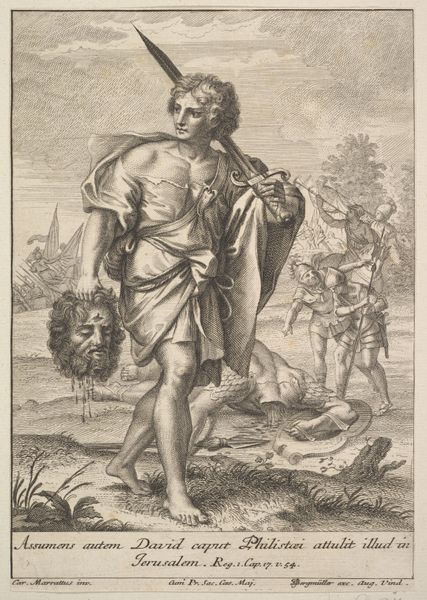
print, etching, engraving
# print
#
pen sketch
#
etching
#
classical-realism
#
figuration
#
history-painting
#
academic-art
#
engraving
#
realism
Dimensions: height 390 mm, width 257 mm
Copyright: Rijks Museum: Open Domain
Curator: Here we have Dirk Jurriaan Sluyter’s “Publius Horatius,” an etching from 1829. The muscular figure in the foreground certainly dominates the composition, doesn't he? Editor: He does. My first impression is one of imposing masculinity, even aggression. The sword held aloft, the defeated figure and shield at his feet... it speaks to power. But also, to the costs of wielding that power, given how he’s set apart from the ongoing combat in the background. Curator: I find myself drawn to the details of the engraving technique itself. Observe the cross-hatching that defines the figure's musculature, the subtle gradations of light and shadow achieved solely through line work. It's a masterclass in controlling tone and texture with minimal means. Note as well how his imposing frame occupies space on the Z axis, looming overhead as he shields the skirmishes taking place. Editor: The historical context is vital here, though. The story of Publius Horatius comes from early Roman history – three brothers chosen to fight representatives of another city-state to avoid full-scale war. The focus on the individual obscures the collective impact of conflict. He's mythologized as a hero, but that obscures the violence intrinsic to such heroic narratives and how societies can use stories to manipulate populations in pursuit of a military goal. The pen-and-ink style adds another interesting wrinkle when placed against this topic because the figure himself starts to look like a propaganda poster in need of widespread distribution. Curator: That contrast you describe, between individual heroism and broader conflict, is further enhanced through formal decisions, would you not agree? The crisp, decisive lines of the figure in the foreground, standing in stark contrast to the frenzied chaos in the distance, exemplifies this precise narrative in one artwork. Editor: I agree that the composition enhances that effect, although I view the "heroic narrative" in the piece with significantly more scrutiny. Examining the stylistic influences – the realism coupled with classical elements—makes the work read less as historical documentation, more like idealized rhetoric made literal on the page. This begs the question: to what ends does such idealization serve? Curator: Precisely. The interplay between style and substance provides for considerable discourse and it’s been a pleasure, even amid some amiable friction, to reexamine "Publius Horatius" together in such detail. Editor: Indeed. It underscores the perpetual need to dissect historical portrayals and comprehend how deeply entrenched socio-political ideologies impact—or are impacted by—what we’re shown.
Comments
No comments
Be the first to comment and join the conversation on the ultimate creative platform.
